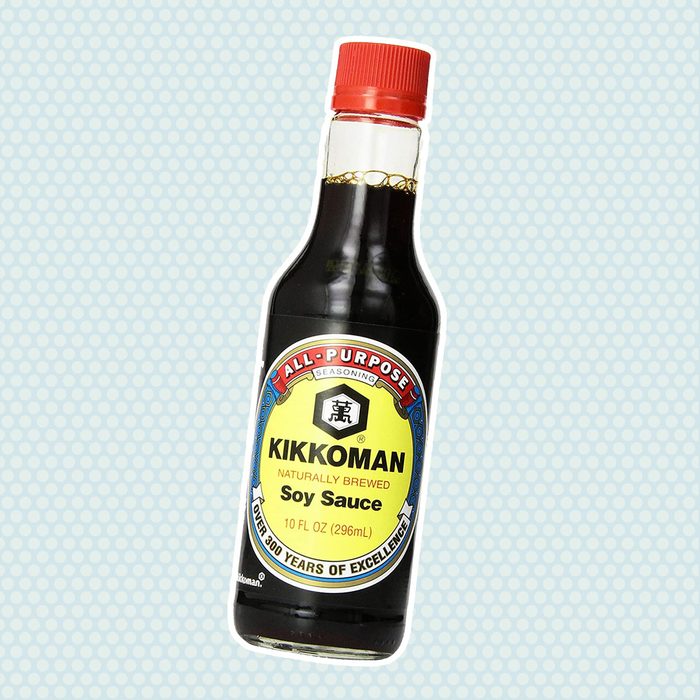
Shoyu (Soy Sauce)
Shoyu, the rich and savory flavor of fermented soybeans, is a must-have for Japanese cooking. According to JAS (Japan Agricultural Standards), there are five types of soy sauce:
- Koi-kuchi soy sauce (dark soy sauce)
- Usu-kuchi soy sauce (light soy sauce)
- Tamari soy sauce
- Sai-shikomi soy sauce
- Shiro soy sauce
Use each type of soy sauce in different preparations to add flavor, essence, umami and glaze. Use koi-kuchi soy sauce to make Chicken Wings in Soy-Ginger Sauce. But I recommend Kikkoman as a staple.
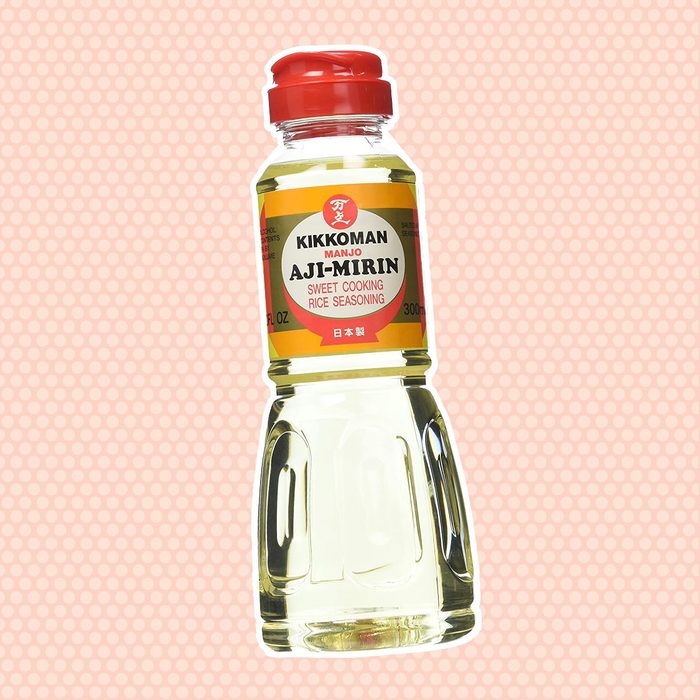
Mirin (Sweet Rice Wine)
Mirin is a type of cooking wine used in many Japanese dishes, including teriyaki, simmered dishes (nimono) and soups for noodle dishes (learn how to make udon noodles from scratch here). Traditionally, mirin is made by fermenting rice with koji, much like making sake, but it is generally sweeter and has less alcohol.
I use Kikkoman Aji Mirin in dishes such as Sukiyaki Style Beef and Vegetables and Kinpira Gobo to add sweetness, lushness, glaze and umami.
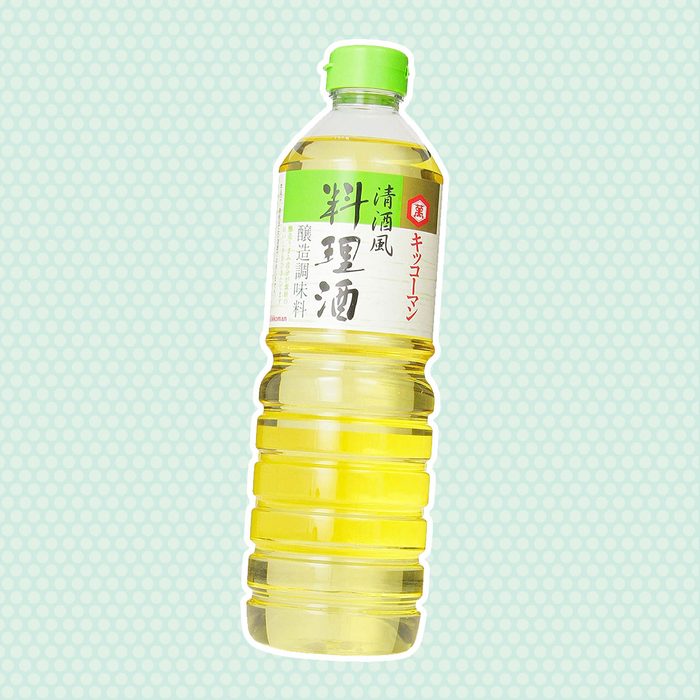
Sake (Rice Wine)
Sake has three primary purposes in Japanese cooking:
- Adds richness and depth to a dish
- Helps tenderize meat and fish
- Helps remove the undesirable gamey flavor from meat and seafood
Sake is often used when cooking meat and seafood, such as Foil Yaki-Style Black Cod and Mushrooms and Citrus Miso Marinated Broiled Salmon with Ginger Aioli.
I use Kikkoman Ryorishu cooking sake, which can be found in most supermarkets. Just keep in mind that it has added salt so it can be sold as a grocery item. If you do not have cooking sake, inexpensive drinking sake makes an excellent substitution.
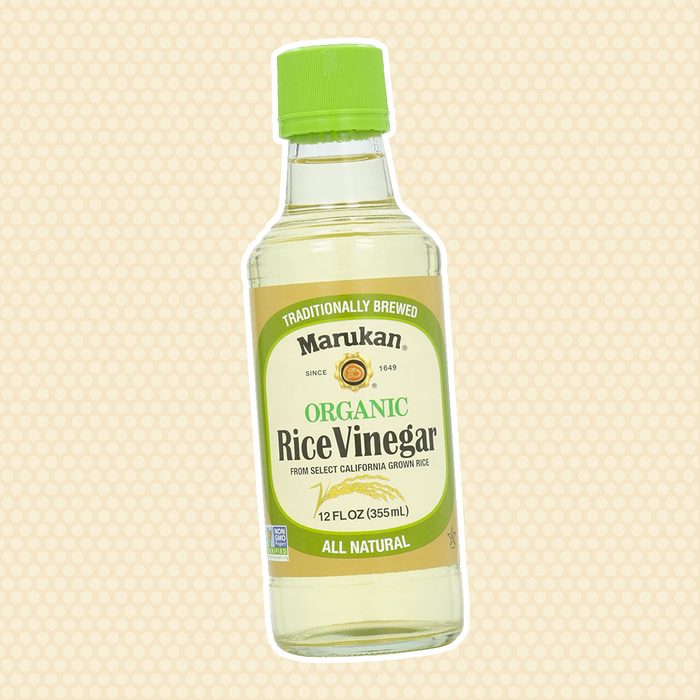
Rice Vinegar
Japanese vinegar is made from rice grain and is mild yet rich, and pairs well in Japanese dishes, especially when preparing sushi rice for your favorite sushi rolls. In addition to sushi, rice vinegar is used in Ponzu Sauce, an essential condiment in Japanese cooking.
I recommend using Marukan Organic Rice Vinegar.
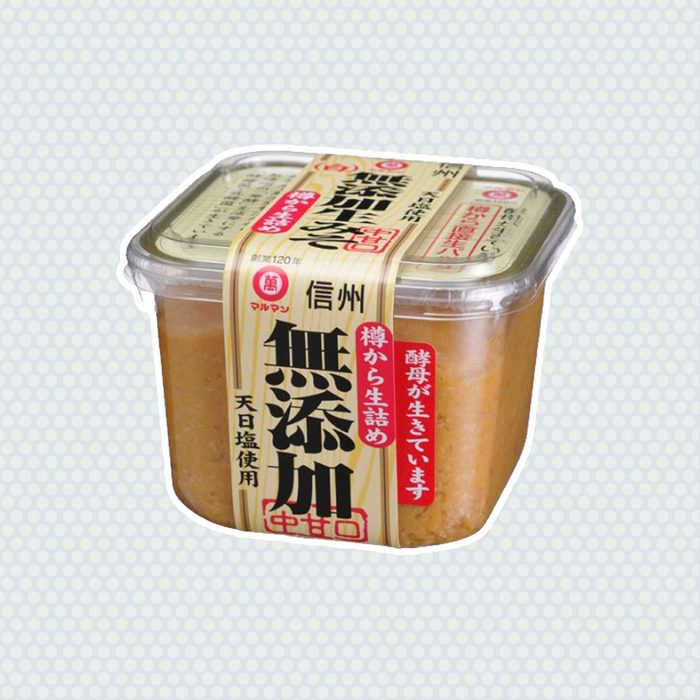
Miso (Fermented Soybean Paste)
Miso is a Japanese culinary staple and an essential condiment to keep in the Japanese kitchen. There are four basic types of miso: shiro miso (white miso), aka miso (red miso), awase miso (combination) and specialty types such as barley miso. If you want to keep only one on hand, I recommend Maruman Organic White Miso.
Miso is high in protein and rich in vitamins and minerals. It’s used in many dishes like this Miso Salmon and a basic miso dressing.
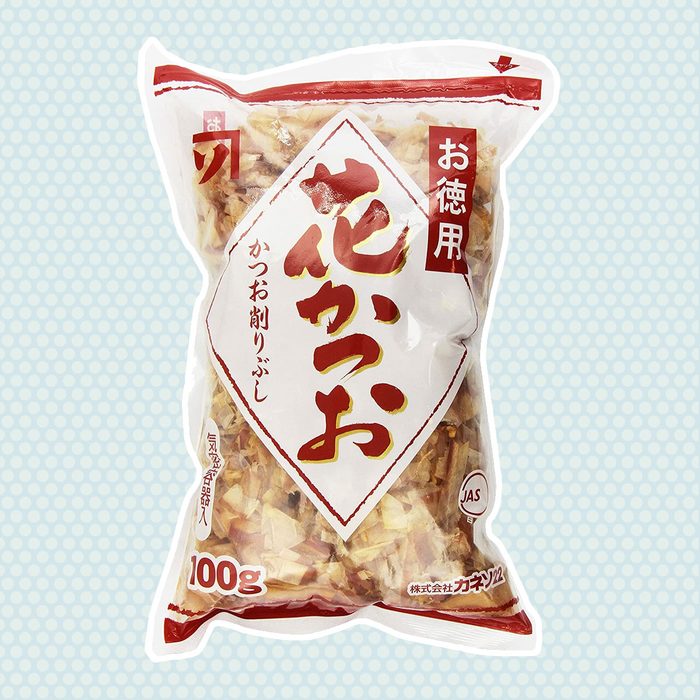
Katsuo-Bushi (Dried Bonito)
Katsuo-bushi is made from smoked, dried bonito, a medium-sized fish similar to skipjack tuna. The rich, smoky flavor adds depth and complexity to dashi stock and it’s also frequently used as a filling for onigiri or a topping for agedashi tofu, okonomiyaki, stir-fried noodles and more. You can buy Kaneso Tokuyou Hanakatsuo bonito flakes on Amazon.
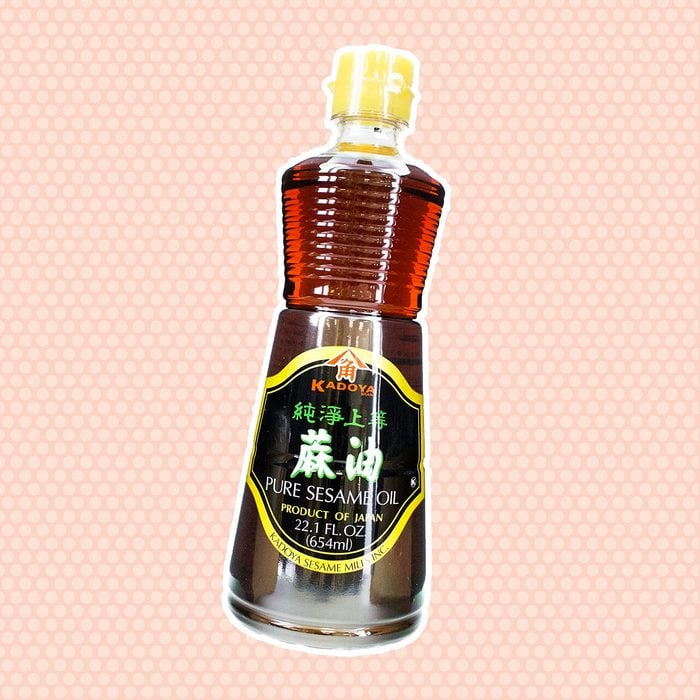
Sesame Oil
The oil made from toasted sesame seeds is deep amber in color and adds richness and a nutty aroma. It is commonly used in stir-fry and dressing dishes. Sesame oil also gives this crispy tofu some personality.. Store sesame oil, like this Kadoya Sesame Oil, in a cool, dark place.
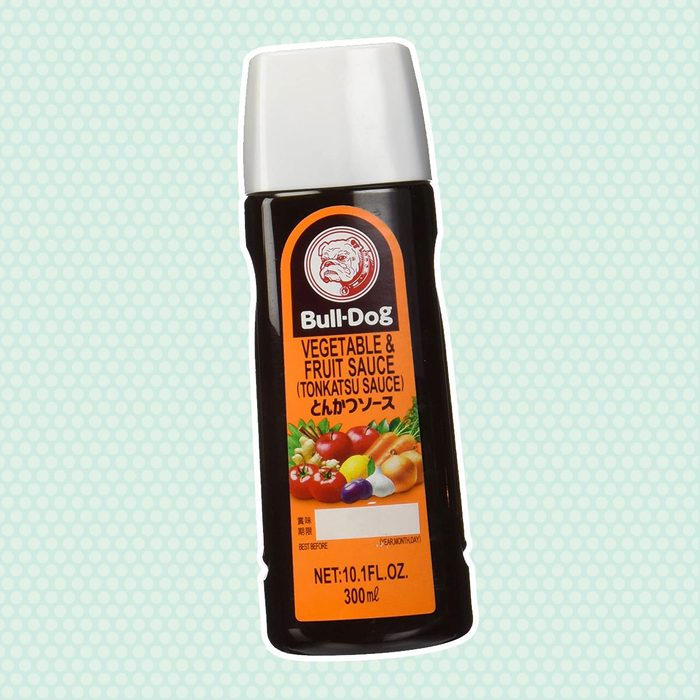
Tonkatsu Sauce
Tonkatsu sauce by the Bull Dog brand has just the right amount of savoriness, sweetness and tanginess. It goes amazingly well with panko-breaded pork, chicken, seafood, croquettes and vegetables. It’s also easy to make at home with other pantry staples, such as ketchup, Worcestershire sauce and soy sauce. I use this recipe for homemade tonkatsu sauce.
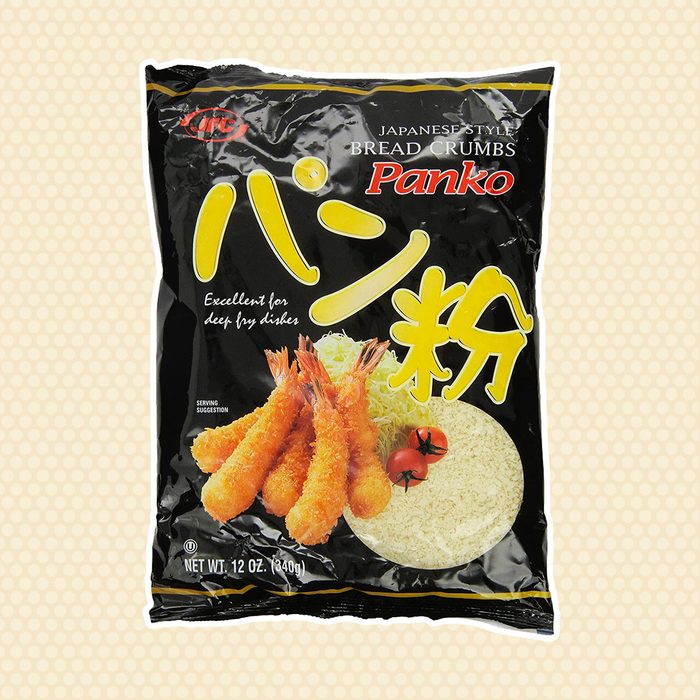
Panko (Japanese Bread Crumbs)
The lightness and flaky texture of Japanese panko bread crumbs add crunch to many dishes. Panko works great for breading fish and meat such as Tonkatsu and Panko Breaded and Fried Oysters. And you don’t have to use panko just for Japanese dishes. Use it whenever a recipe calls for breadcrumbs.
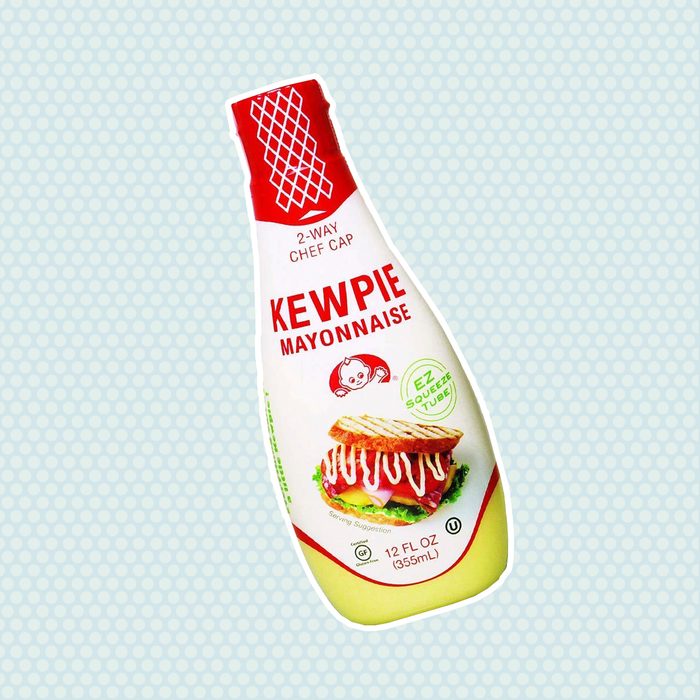
Japanese Mayonnaise
Look for Japanese mayonnaise at an Asian grocery store; the most popular brands are Kewpie or Kenko. They are tangier and sweeter compared to their American counterparts. Japanese mayonnaise is made with egg yolks and rice vinegar, resulting in a mayo that is richer, creamier and thicker in inconsistency.
It complements Japanese food well, since it uses rice vinegar. Try making potato salad using Japanese mayonnaise, and you will be surprised by its tangy, light flavor and texture.
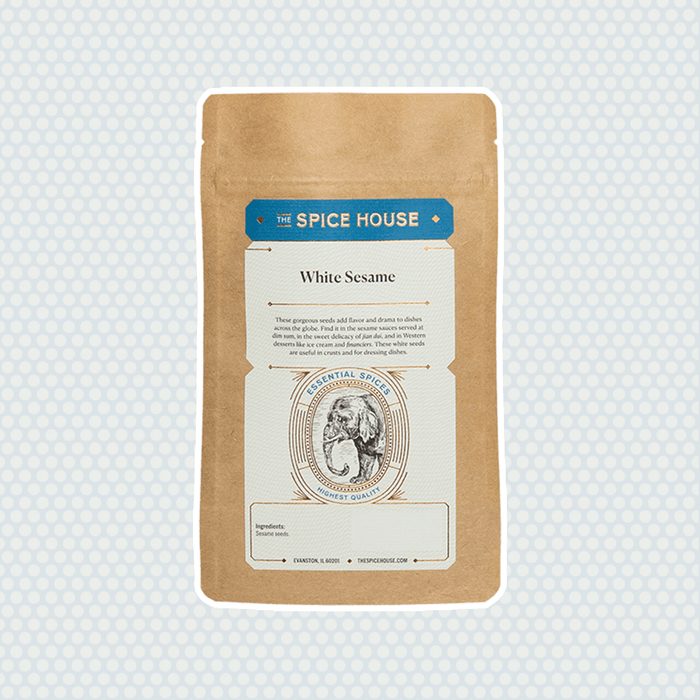
Sesame Seeds
Japan is one of the largest importers of sesame seeds globally and they are used in many traditional dishes. One of the most popular preparations is where toasted sesame seeds are ground in a mortar and pestle to create a nutty-flavored paste.
Try making Spinach with Sesame Seeds, a healthy and straightforward spinach dish with ground toasted sesame seeds. You can also use toasted sesame seeds as a topping to add crunch and nuttiness to your favorite stir-fry or salad dishes.

Shichimi Pepper
Shichimi (pronounced “she-chee-mee”) is a traditional Japanese spice mixture; shichi means seven, and mi means flavor. Although there are many variations, shichimi usually consists of chili pepper, sansho pepper, orange peel, sesame seeds, hemp seeds, dried ginger, nori and poppy seeds.
I use Shichimi Togarashi with soup and noodle dishes, grilled meat and seafood, as well as okonomiyaki and yakisoba.
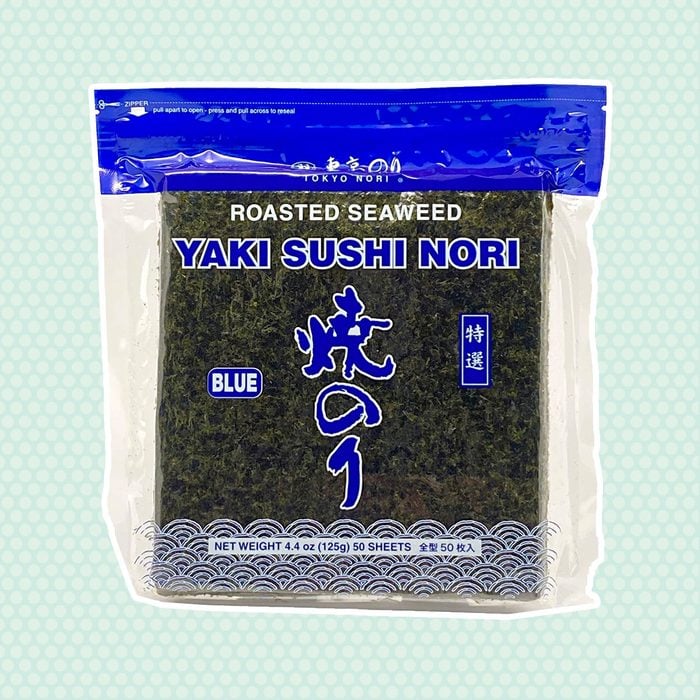
Nori Sheets
Nori sheets are essential Japanese ingredients for sushi-making. The sheets, which are thin and crunchy seaweed, have a hint of salty, sea-flavored aroma and taste. Nori is also great for salads and noodle toppings when shredded or cut into thin strips.
Look for nori sheets that are highest in quality, like Tokyo Nori, and keep them in your pantry in airtight containers.
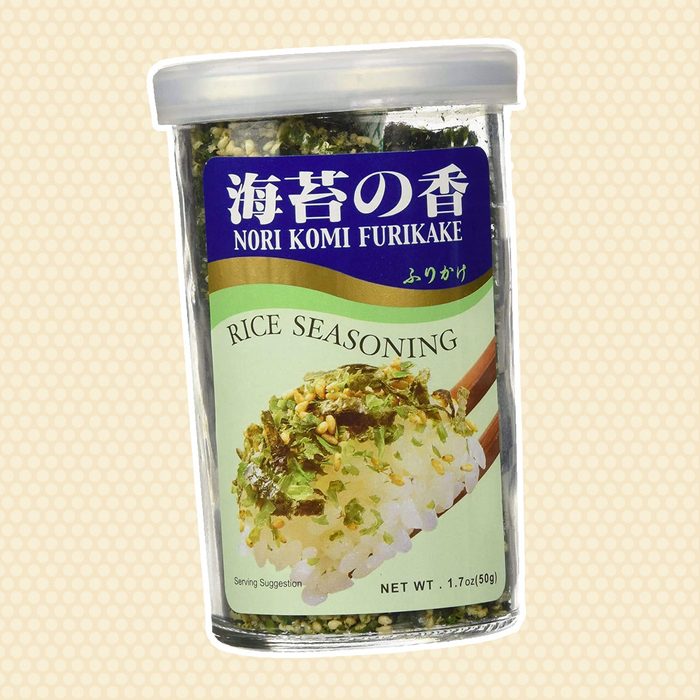
Furikake
Furikake is a dried Japanese seasoning that comes in a variety of flavors: dried fish (bonito and salmon), vegetables (mustard green and pickled plums), eggs, herbs (green onions and shiso leaves) with shredded nori sheets, toasted sesame and seasonings.
These crunchy, savory, and umami-packed seasonings are often sprinkled on top of cooked rice, mixed into rice for onigiri and salads. The combination of the ingredients and flavors is endless, and you will be sure to find one you like—I use Nori Fume Furikake.
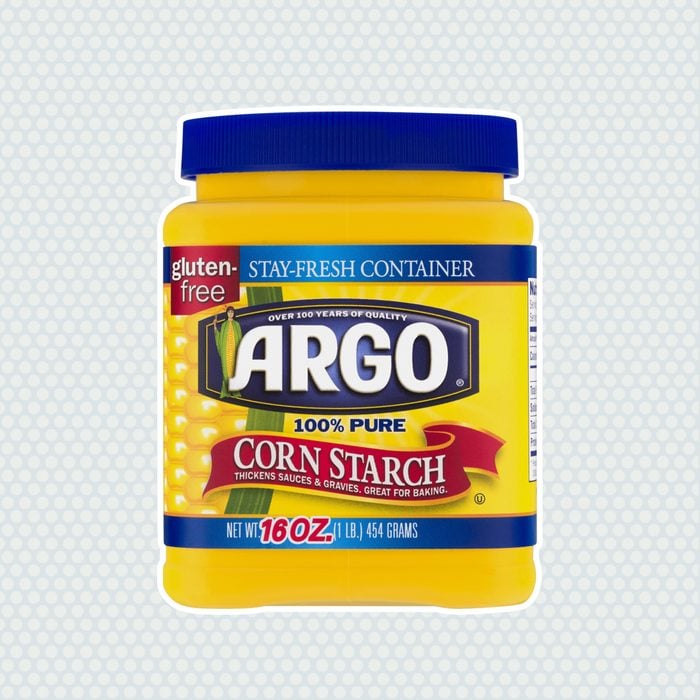
Corn Starch (or Potato Starch)
This may not appear to be a crucial Japanese ingredient, but it’s used in many recipes. Traditionally, potato starch is used in Japan; however, where potato starch is harder to find, corn starch is a great substitution. It helps hold flavors, adds thickness to sauces and is used as a coating for ingredients—many dishes, including karaage, agedashi tofu and steamed pork buns, call for corn starch.
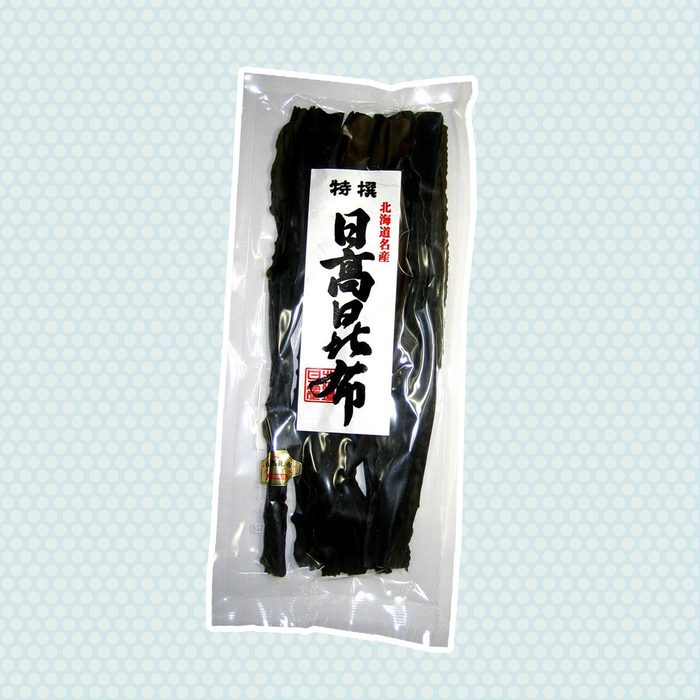
Kombu (Dried Kelp)
One of the two essential ingredients used for dashi, kombu is large, olive-colored kelp that is mainly grown and harvested in the cool waters of Northern Japan. Kombu has a subtle flavor and is rich in glutamic acid, which provides the essential umami taste in Japanese cooking. Kombu is mainly used for making dashi or vegetarian stocks but can be softened and used directly in simmered dishes. Because of its mild taste and versatility, I recommend stocking your pantry with Hidaka Kombu.
